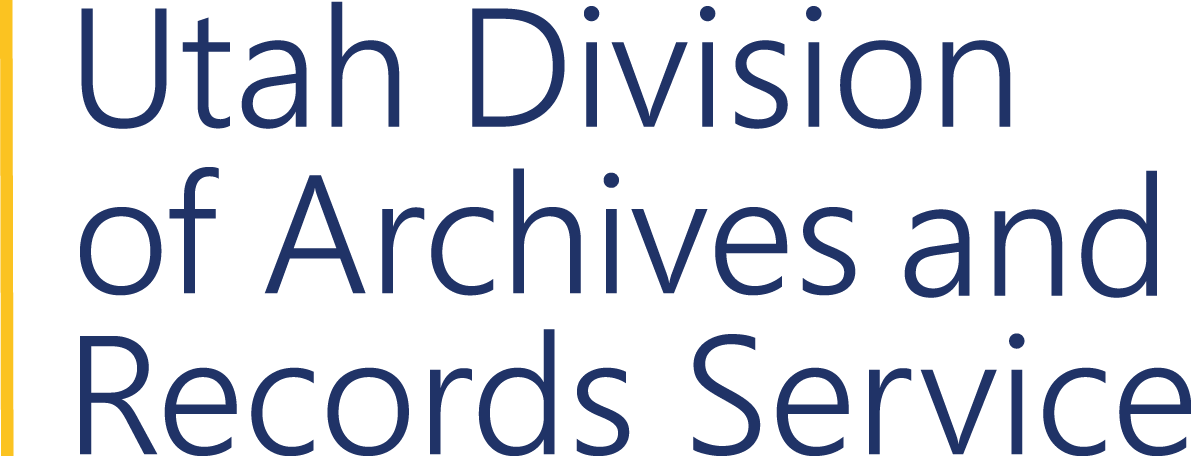CASTLE GATE RELIEF FUND COMMITTEE
Agency History #189
CREATION
The Castle Gate Relief Fund Committee was created by Governor Charles R. Mabey in response to the Castle Gate mine disaster of March 8, 1924. The mine explosions killed 172 men and left 110 widows. The Committee was a volunteer group which distributed funds that had been collected by public subscription to the widows and children. The Committee ended in early 1936 after all funds were disbursed.
FUNCTIONS
In the committee's by-laws they outlined a three-fold mission. The first was to maintain the proper care and investment of trust funds. The second was to provide the relief and assistance of beneficiaries through the use of trust funds. The final was to establish the proper accounting of trust funds and their use . Specific duties included: creating a plan for allocation, finding those qualified for relief, assessing their situation, keeping accurate records to document allocation of funds, maintaining contact with the widows and children through personal visits or by mail, investing funds in government bonds and keeping close contact with banks.
The first official committee meeting was held on Wednesday April 30, 1924 at the State Capitol. Governor Mabey called the meeting to order and requested the Committee to organize for the purpose of formulating plans for administering the funds. The committee consisted of a Chairman, Vice-Chairman, Treasurer and Secretary. A sub-committee was also formed with the purpose of establishing various rules of procedure, such as preparation of forms, statement of accounts, recommendations relative to investments and any other matters which would be of value to administering the fund (Minutes 30 April 1924). A social worker was hired to maintain contacts with the victim's families and dependents, and a stenographer was hired to maintain committee files.
On June 27, 1924, the by-laws were presented, amended, then accepted by the committee members. Also at this time, Mrs. Palmer was introduced as the welfare worker who was hired to maintain contact with the victim's families (Minutes 27 June 1924).
On May 11, 1925, six Castle Gate widows formally presented a petition requesting the immediate distribution of the fund to the beneficiaries. After discussion, the petitioners and the committee decided to retain the then current method of distribution.
The fund expired by December 1935 and the committee held its last meeting on February 12, 1936 where they balanced the final accounts (Minutes 12 Feb 1936). On March 4, 1936, Governor Blood sent each member a letter of commendation recognizing their success in the maintenance and distribution of the fund.
ADMINISTRATION
The committee was selected by Governor Mabey and was composed of nine volunteer members. Officers included a Chairman, Vice Chairman, Treasurer, Secretary, and Chairman Subcommittee on Relief.
COMMITTEE MEMBERS AND OFFICERS
Imer Pett, Chairman until death in 1935
G. L. Becker, Chairman 1935-1936
H. J. Binch, Vice Chairman replaced F. Erickson 1927
M. A. Keyser, Treasurer
Jas. T. Hammond, Secretary
Mrs. C. H. Stevenson, Chairman Subcommittee on Relief
F. E. Morris
Darrell T. Lane
W. A. Engle, Chairman of the Board of County Commissioners of Carbon County
Eugene Santschi, replaced by successor to Chairman of the Board of County Commissioners of Carbon County
John Mathis, replaced Santschi
Ferdinand Erickson, died 1927
William M. Knerr, resigned 1924
O. F. McShane, resigned 1924
Nephi L. Morris, resigned 1924
H. F. Dicke, resigned
Joy H. Johnson, resigned
Mrs. Annie Palmer, Social Worker, died 1932
COMPILED BY: M. Call, December 1997
SOURCES
Castle Gate Relief Fund Committee. Minutes 1924-1936 (Series 1207)
Correspondence 1924-1936 (Series 19423)
Reports under By-laws (Series 19624)
Page Last Updated July 2, 2003.
